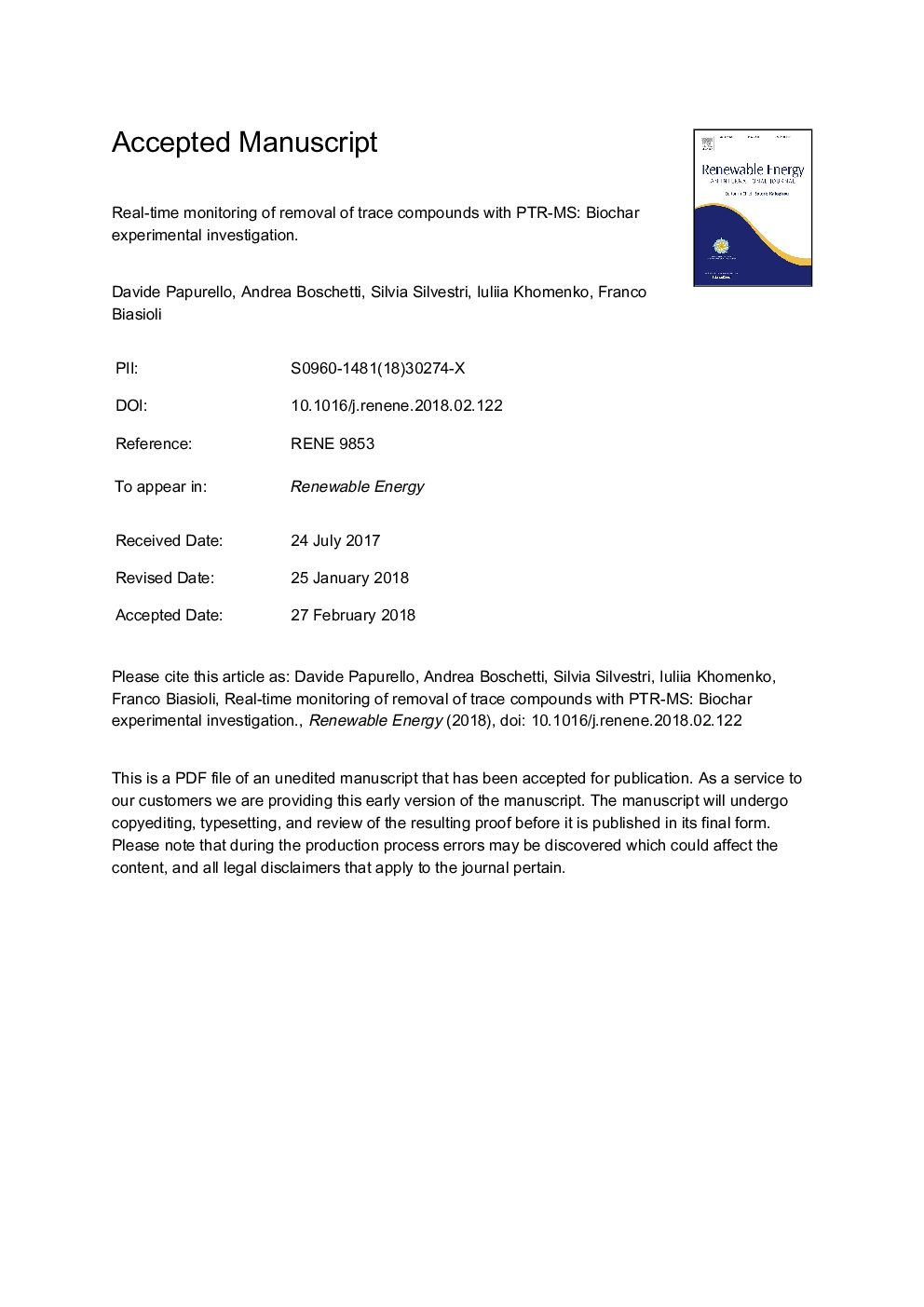| Article ID | Journal | Published Year | Pages | File Type |
|---|---|---|---|---|
| 6764345 | Renewable Energy | 2018 | 39 Pages |
Abstract
The removal of trace compounds contained in a biogas from the dry anaerobic digestion of organic waste was accomplished. The resulting data were monitored online with a direct injection mass spectrometry technique. Biochar from the pyrolysis of recovered wood waste was used as sorbent material. This material was selected to demonstrate the usefulness of recovered waste for the energy production purposes. Biochar withstands the removal of 2-butanone (158.8â¯mg/g), toluene (140.1â¯mg/g) and limonene (64â¯mg/g) better compared to sulfur (H2S 1.05â¯mg/g) and siloxane (D3, 1.28â¯mg/g) compounds. Hydrogen sulfide was the most abundant sulfur compound with the average concentration about 24â¯ppm(v). The tested sorbent material was able to withstand the H2S and siloxane concentration for almost 30â¯h with the biogas pilot plant conditions before toachieve the limit value for SOFC applications, 1â¯ppm(v) and 150â¯ppb(v) respectively. The performance achieved with this material are comparable to some commercial carbons, even if some more optimized and selective materials show better results especially for the removal of sulfur compounds.
Related Topics
Physical Sciences and Engineering
Energy
Renewable Energy, Sustainability and the Environment
Authors
Davide Papurello, Andrea Boschetti, Silvia Silvestri, Iuliia Khomenko, Franco Biasioli,
